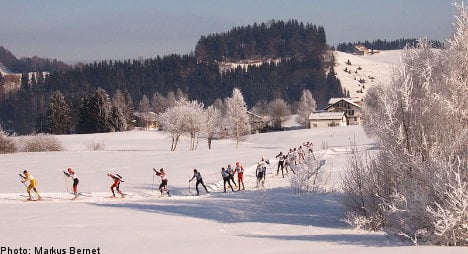Yes, there are two techniques with different equipment: classic, where the skis move through machine-groomed tracks, and free technique, where skiers glide on shorter skis and is slightly faster. The athletes wear skin-tight, all-in-one suits to make them stream-lined.
Isn’t it dominated by the Scandinavians?
Certainly Sweden, Norway and Finland are strong as the sport originated there. But Switzerland’s Dario Cologna and Lukas Bauer of the Czech Republic are two men to watch, while Justyna Kowalczyk of Poland and Slovenia’s Petra Majdic are tipped for big things in women’s world.
So the race begins and everyone just skis like crazy to get to the finish?
No, there are six different disciplines and 12 events where medals will be won – Individual, Mass Start, Pursuit, Individual Sprint, Team Sprint and Relay.
A team sprint AND a relay?
In a nutshell, the Team Sprint sees teams of two athletes race against each other three times each for a total of six laps over the sprint course.
After the semi-finals, the best 10 teams make the final. In the relay, teams of four ski the first two legs using the classic technique, and the last two legs using free technique. The races begin in a massed start.”
Sounds like a recipe for a pile-up.
No, in the massed start races, the skiers go off simultaneously, lined up in an arrow format with the best-ranked skiers at the arrow’s point.
So what do the different race categories mean?
Basically, for the Individual Start, an athlete starts every 30 seconds and the winner is the skier with the lowest time. For the Massed Start, the skiers start simultaneously in the arrow formation and the first across the line wins, often with a photo finish. The Pursuit combines free and classic techniques and the skiers change equipment halfway through.
A bit like triathlon?
Yes. At the halfway mark, the athletes change skis and poles as quickly as possible and the first across the line wins. The Individual Sprint is a knock-out competition where six skiers eventually contest the final.
Like a football cup competition?
Yes, the skiers have to survive three rounds to contest the final. As you can probably imagine, it is a physically demanding sport.
Ah yes, doesn’t have a drug-free reputation, does it?
Like all endurance sports, it is prone to doping as the gap between success and failure can be less than a second. The sport requires huge amounts of aerobic training, especially for endurance events like the men’s 50-kilometre mass start. High-performance athletes train twice a day, six days a week and up to 700 hours yearly.
What is Nordic Combined all about?
It’s where ski-jumping meets cross-country skiing. After a jumping competition, the athletes rest and then contest a free technique cross-country race. The break between can be as little as 35 minutes, or as long as a few hours.
How can they work out a winner with distance and times involved?
Known as a Gundersen or pursuit start, the jumping results decide the starting seed for the cross-country race that follows with the winner going off first and the other athletes following seconds or even minutes afterwards depending on their jump performance.



 Please whitelist us to continue reading.
Please whitelist us to continue reading.
Member comments